 Attack MCU AT91SAM7S256 Binary
Attack MCU AT91SAM7S256 Binary
In the world of embedded systems, security measures such as encryption, locking mechanisms, and readout protection are often deployed to safeguard proprietary code and prevent unauthorized access. However, in legitimate scenarios like legacy system recovery, custom development, or system maintenance, the need to attack MCU AT91SAM7S256 binary becomes critical.
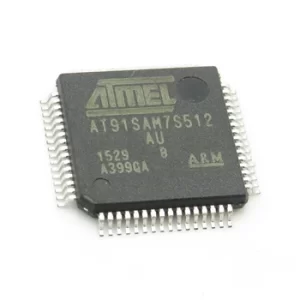
Наш сервис выделяется тем, что предоставляет не только возможность разблокировать и скопировать прошивку, но и восстановить исходную функциональность, даже при работе с защищенной, заблокированной или зашифрованной прошивкой устаревших или отслуживших свой срок устройств. Мы гарантируем полную конфиденциальность, соответствие законодательству и индивидуальные решения на основе ваших технических и эксплуатационных целей. Независимо от того, имеете ли вы дело с защищенной прошивкой на AT91SAM7S256 или пытаетесь извлечь данные из заблокированного Atmega8A, мы предлагаем набор навыков и инструменты для восстановления ваших встроенных активов. Когда дело доходит до встроенной безопасности, доступ к исходным двоичным данным, флэш-памяти или данным прошивки может стать ключом к восстановлению, инновациям или оптимизации. Наша команда здесь, чтобы помочь вам атаковать двоичный код MCU AT91SAM7S256, дублировать заблокированные данные и восстановить ваши системы до полного оперативного контроля — законно, этично и эффективно.
At CIRCUIT ENGINEERING CO., LTD, we specialize in professional microcontroller security analysis and offer services to unlock, copy, crack, decrypt, and restore protected binaries from complex microcontrollers such as the AT91SAM7S256 and ATmega8A. Our methods are refined, tested, and tailored to help clients legally duplicate, decode, or clone embedded firmware stored in secured memory environments.
Attack MCU AT91SAM7S256 and break microcontroller at91sam7s256 fuse bit, extract embeded Binary from ATMEL microprocessor flash and eeprom memory;
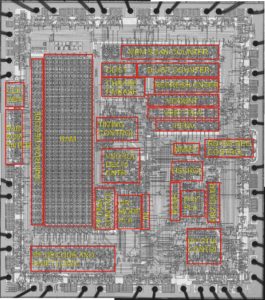
· Incorporates the ARM7TDMI® ARM® Thumb® Processor
– High-performance 32-bit RISC Architecture
– High-density 16-bit Instruction Set
– Leader in MIPS/Watt
– Embedded*ICE™ In-circuit Emulation, Debug Communication Channel Support
Internal High-speed Flash
– 256 kbytes, organized in 1024 Pages of 256 Bytes (AT91SAM7S256)
– 128 kbytes, organized in 512 Pages of 256 Bytes (AT91SAM7S128)
– 64 kbytes, organized in 512 Pages of 128 Bytes (AT91SAM7S64)
– 32 kbytes, organized in 256 Pages of 128 Bytes (AT91SAM7S321/32)
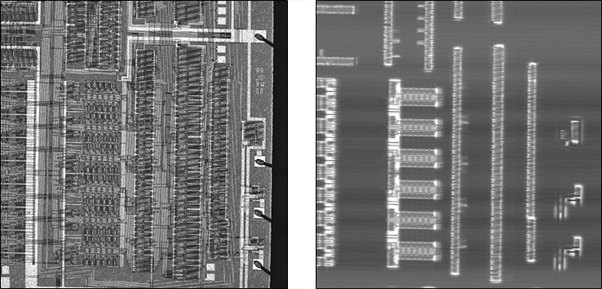
– Single Cycle Access at Up to 30 MHz in Worst Case Conditions
– Prefetch Buffer Optimizing Thumb Instruction Execution at Maximum Speed after break avr atmega64a MCU
– Page Programming Time: 6 ms, Including Page Auto-erase, Full Erase Time: 15 ms
– 10,000 Write Cycles, 10-year Data Retention Capability, Sector Lock Capabilities,
Flash Security Bit
– Fast Flash Programming Interface for High Volume Production
Internal High-speed SRAM, Single-cycle Access at Maximum Speed
– 64 kbytes (AT91SAM7S256)
– 32 kbytes (AT91SAM7S128)
– 16 kbytes (AT91SAM7S64)
– 8 kbytes (AT91SAM7S321/32)
Memory Controller (MC)
– Embedded Flash Controller, Abort Status and Misalignment Detection
Reset Controller (RSTC)
– Based on Power-on Reset and Low-power Factory-calibrated Brown-out Detector
– Provides External Reset Signal Shaping and Reset Source Status
Clock Generator (CKGR)
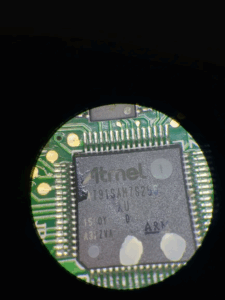
Il nostro servizio si distingue non solo per la possibilità di sbloccare e copiare il firmware, ma anche per il ripristino delle funzionalità originali, anche quando si tratta di firmware protetti, bloccati o crittografati da dispositivi legacy o a fine vita. Garantiamo la massima riservatezza, la conformità legale e soluzioni personalizzate in base ai vostri obiettivi tecnici e operativi. Che si tratti di firmware protetto su AT91SAM7S256 o di estrarre dati da un Atmega8A bloccato, offriamo le competenze e gli strumenti necessari per recuperare le risorse embedded. Quando si tratta di sicurezza embedded, l’accesso ai dati binari, flash o firmware originali può essere la chiave per il ripristino, l’innovazione o l’ottimizzazione. Il nostro team è qui per aiutarvi ad attaccare il binario MCU AT91SAM7S256, duplicare i dati bloccati e ripristinare il pieno controllo operativo dei vostri sistemi, in modo legale, etico ed efficace.
– Low-power RC Oscillator, 3 to 20 MHz On-chip Oscillator and one PLL
Power Management Controller (PMC)
– Software Power Optimization Capabilities, Including Slow Clock Mode (Down to 500 Hz) and Idle Mode
– Three Programmable External Clock Signals
Advanced Interrupt Controller (AIC)
– Individually Maskable, Eight-level Priority, Vectored Interrupt Sources
– Two (AT91SAM7S256/128/64/321) or One (AT91SAM7S32) External Interrupt Sources and One Fast Interrupt Source, Spurious Interrupt Protected Debug Unit (DBGU)
– 2-wire UART and Support for Debug Communication Channel interrupt,
Programmable ICE Access Prevention by break microcontroller atmega128 hex
Periodic Interval Timer (PIT)
– 20-bit Programmable Counter plus 12-bit Interval Counter Windowed Watchdog (WDT)
– 12-bit key-protected Programmable Counter
– Provides Reset or Interrupt Signals to the System
– Counter May Be Stopped While the Processor is in Debug State or in Idle Mode
Eleven (AT91SAM7S256/128/64/321) or Nine (AT91SAM7S32) Peripheral DMA Controller (PDC) Channels
One USB 2.0 Full Speed (12 Mbits per Second) Device Port (Except for the AT91SAM7S32).
– On-chip Transceiver, 328-byte Configurable Integrated FIFOs
One Synchronous Serial Controller (SSC)
– Independent Clock and Frame Sync Signals for Each Receiver and Transmitter
– I²S Analog Interface Support, Time Division Multiplex Support
– High-speed Continuous Data Stream Capabilities with 32-bit Data Transfer
Our Attack Procedure: From Secured Chip to Decompiled Source Code
1. Initial Chip Analysis
We begin with a detailed inspection of the microcontroller’s architecture and protection mechanisms. For the AT91SAM7S256, this involves examining the configuration of the Flash memory, bootloader, JTAG access control, and any locked or encrypted firmware segments.
2. Bypass Protection Layer
Using advanced fault injection techniques such as voltage glitching or clock manipulation, we attempt to bypass readout protection features. This allows us to gain access to internal EEPROM, Flash, or SRAM regions that would otherwise be inaccessible.
3. Binary Extraction
Once the chip’s defenses are bypassed, we proceed to dump the binary file directly from the MCU’s internal memory. This includes capturing not just the main application firmware, but also any bootloader, calibration data, or configuration archives present within the protected embedded system.
4. Binary to Heximal/File Conversion
The raw binary dump is then formatted and structured into readable heximal files or binary archives suitable for further processing and analysis.
5. Decryption & Decoding
If the firmware is encrypted, our team applies static and dynamic analysis techniques to decrypt or decode the content. This step may involve pattern recognition, cryptographic key recovery, or even side-channel analysis in highly secured environments.
6. Disassembly and Decompilation
We disassemble the machine code into assembly language, then translate it into high-level source code, typically in C. This makes the previously locked logic of the device comprehensible and modifiable for reverse engineering, troubleshooting, or reprogramming.
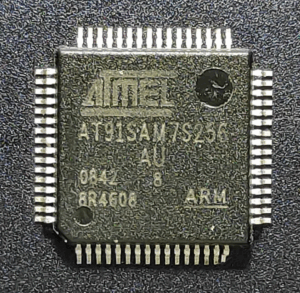
Nasza usługa wyróżnia się tym, że nie tylko umożliwia odblokowanie i skopiowanie oprogramowania układowego, ale także przywrócenie oryginalnej funkcjonalności, nawet w przypadku chronionego, zablokowanego lub zaszyfrowanego oprogramowania układowego ze starszych lub wycofanych z eksploatacji urządzeń. Zapewniamy całkowitą poufność, zgodność z prawem i dostosowane rozwiązania oparte na Twoich celach technicznych i operacyjnych. Niezależnie od tego, czy masz do czynienia z zabezpieczonym oprogramowaniem układowym na AT91SAM7S256, czy chcesz wyodrębnić dane z zablokowanego Atmega8A, oferujemy zestaw umiejętności i narzędzia do odzyskiwania wbudowanych zasobów. Jeśli chodzi o wbudowane zabezpieczenia, dostęp do oryginalnych danych binarnych, flash lub oprogramowania układowego może być kluczem do odzyskiwania, innowacji lub optymalizacji. Nasz zespół jest tutaj, aby pomóc Ci zaatakować binarne dane MCU AT91SAM7S256, zduplikować zablokowane dane i przywrócić pełną kontrolę operacyjną Twoich systemów — legalnie, etycznie i skutecznie.
Two (AT91SAM7S256/128/64/321) or One (AT91SAM7S32) Universal Synchronous/Asynchronous Receiver Transmitters (USART)
– Individual Baud Rate Generator, IrDA® Infrared Modulation/Demodulation
– Support for ISO7816 T0/T1 Smart Card, Hardware Handshaking, RS485 Support
– Manchester Encoder/Decoder (AT91SAM7S256/128)
– Full Modem Line Support on USART1 (AT91SAM7S256/128/64/321)
One Master/Slave Serial Peripheral Interface (SPI)
– 8- to 16-bit Programmable Data Length, Four External Peripheral Chip Selects
One Three (AT91SAM7S256/128/64/321)-channel or Two (AT91SAM7S32)-channel 16-bit Timer/Counter (TC)
– Three (AT91SAM7S256/128/64/321) or One (AT91SAM7S32) External Clock Inputs, Two Multi-purpose I/O Pins per Channel before Attack MCU
– Double PWM Generation, Capture/Waveform Mode, Up/Down Capability
One Four-channel 16-bit PWM Controller (PWMC)
One Two-wire Interface (TWI)
– Master Mode Support Only, All Two-wire Atmel EEPROMs Supported
One 8-channel 10-bit Analog-to-Digital Converter, Four Channels Multiplexed with Digital I/Os
SAM-BA™ Boot Assistant
– Default Boot program
– Interface with SAM-BA Graphic User Interface
IEEE 1149.1 JTAG Boundary Scan on All Digital Pins if Attack MCU
5V-tolerant I/Os, including Four High-current Drive I/O lines, Up to 16 mA Each
Power Supplies
– Embedded 1.8V Regulator, Drawing up to 100 mA for the Core and External Components
– 3.3V or 1.8V VDDIO I/O Lines Power Supply, Independent 3.3V VDDFLASH Flash Power Supply
– 1.8V VDDCORE Core Power Supply with Brown-out Detector
Fully Static Operation: Up to 55 MHz at 1.65V and 85° C Worst Case Conditions
Available in a 64-lead LQFP Green Package (AT91SAM7S256/128/64/321) and 48-lead LQFP Green Package (AT91SAM7S32).